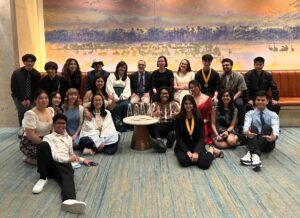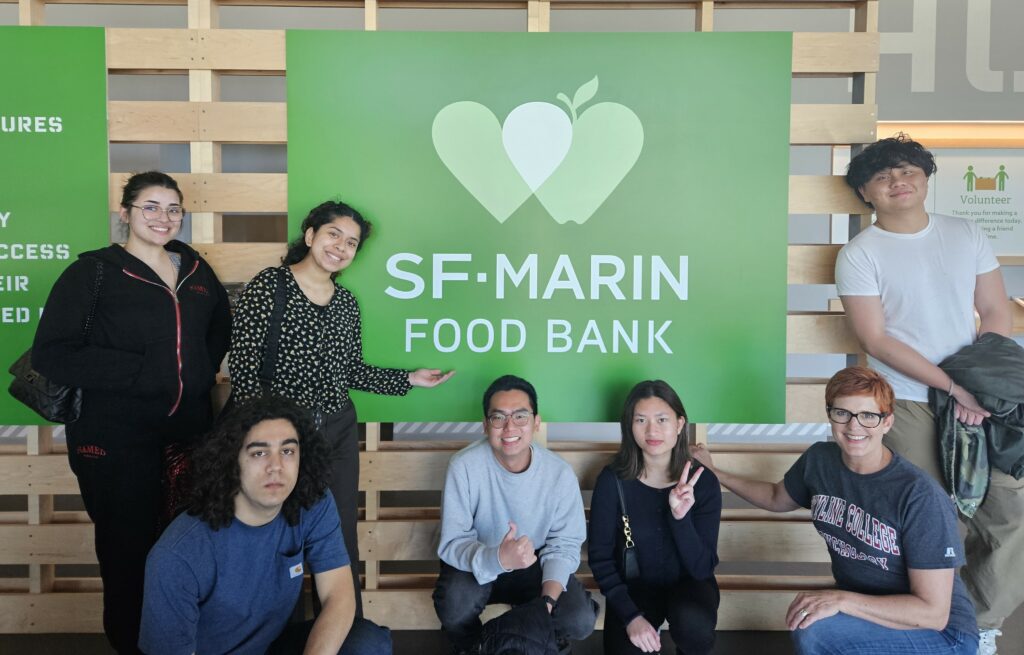 As someone committed to empowering students, imagine how dismaying it feels to hear a college graduate on the BART train remark that he didn’t learn anything in college. Such a dismissive remark may reflect poorly on higher education; it may be more helpful to see it as a failure to convey to students what competencies they will master while with us. To make these competencies more explicit, Skyline College faculty and staff created Institutional Student Learning Outcomes (ISLOs) for students attaining an AA/ AS. These ISLOs are assessed in two ways, with a sample of faculty across the disciplines applying a common rubric, and by way of the results from the Community College Survey of Student Engagement (CCSSE) administered at Skyline College in 2016, 2012, and 2008.
As someone committed to empowering students, imagine how dismaying it feels to hear a college graduate on the BART train remark that he didn’t learn anything in college. Such a dismissive remark may reflect poorly on higher education; it may be more helpful to see it as a failure to convey to students what competencies they will master while with us. To make these competencies more explicit, Skyline College faculty and staff created Institutional Student Learning Outcomes (ISLOs) for students attaining an AA/ AS. These ISLOs are assessed in two ways, with a sample of faculty across the disciplines applying a common rubric, and by way of the results from the Community College Survey of Student Engagement (CCSSE) administered at Skyline College in 2016, 2012, and 2008.
The CCSSE asks questions about student behaviors as well as institutional perceptions. With a decent sample size of about 10% of Skyline College students completing the survey, the results can positively inform our pedagogical and programming practices. Although not intended, the CCSSE also can be used as a proxy for achievement of the ISLOs. The primary drawback is that student responses are self- reported, as opposed to direct evaluation of student work and behaviors.
For this report, only the Critical Thinking and Effective Communication ISLOs are considered since the associated survey items remain the same. Eleven survey items were associated with the Critical Thinking ISLO, with steady gains between 2008 and 2016 for five items, and four dropping slightly in 2012 but increasing in 2016. As for the Effective Communication ISLO, there were eight survey items, with all but one of the items either holding steady or experiencing slight decreases in 2012 only to increase in 2016. Overall, the CCSSE results suggest that students are afforded many opportunities to strengthen their abilities to think critically and communicate clearly. But faculty may want to consider ways in which they can encourage more students to take advantage of their office hours.
 Three items were used to assess both of the ISLOs, and two of those three items had the most striking increases between 2012 and 2016. They were the frequency in which students “worked on a paper or project that required integrating ideas or information from various sources” and “made a class presentation,” 9% gains from 2012 to 2016. The first item about the paper or project hovers at “sometimes/ often” (2.79 on a four- point scale).
Three items were used to assess both of the ISLOs, and two of those three items had the most striking increases between 2012 and 2016. They were the frequency in which students “worked on a paper or project that required integrating ideas or information from various sources” and “made a class presentation,” 9% gains from 2012 to 2016. The first item about the paper or project hovers at “sometimes/ often” (2.79 on a four- point scale).
On the other hand, while the item on “class presentations” showed a notable gain, it was less prevalent than the paper or project. Class presentations are “sometimes” assigned (2.08 on a four- point scale). This result drew the attention of the Institutional Effectiveness Committee (IEC). Should we be concerned that class presentations aren’t employed more frequently, since they are an effective means for students to teach is other? Context provides some insight to this question. Time is one factor. Highly enrolled courses may have far too many group presentations to accommodate. And if presentations are assigned, then some course content may be glossed over to accommodate them. Another factor are the presentation parameters. Time allotted for presentations is best used if students be asked to engage in higher ordered thinking, presenting their viewpoint and substantiating it with relevant evidence, as opposed to simply regurgitating in the form it was taught.
The only item to decrease steadily between 2008 and 2016 pertained to students “discuss[ing] ideas from [their] readings or classes with others outside of class (students, family members, co-workers, etc.).” The most recent result hovered between “sometimes” and “often” (2.39 on a four- point scale), which makes the overall decrease less alarming.
What may be of more concern is that respondents were less likely to “discuss ideas from [their] readings or classes with instructors outside of class,” with their responses between “never” and “sometimes” (1.77 on a four- point scale). The IEC agreed that office hours are critical to student learning, but conceded that students may get the information they need in class or lab. On the other hand, in one-on-one settings such as office hours, students can build constructive relationships with their instructors, in addition to securing what they need to learn. Thus the IEC discussed strategies to accommodate students’ busy schedules, such as varying office hour times, or using technology such as phone conferences, virtual office hours, and the use of online discussion boards via Canvas and group e-mails to efficiently disseminate information.
Hopefully this brief prompted some reflection on your part as to what you can do as an instructor to strengthen student success. For those of you who would like to see the full results for your own use and/or for departmental discussions, please see http://skylinecollege.edu/prie/assets/surveyresults/studentfeedback/ISLO_CriticalThinking_EffectiveCommunication_Handout.pdf .
If you would like to find out more about students’ overall responses to the CCSSE, please join us at the May 4 Academic Senate meeting, where Skyline College’s Planning, Research, and Institutional Effectiveness staff will highlight main findings. The 2016 CCSSE results also are posted at http://skylinecollege.edu/prie/studentfeedback.php. For more information about the CCSSE, visit www.ccsse.org, or for a copy of the actual survey, see http://www.ccsse.org/aboutsurvey/docs/CCSR_2005.pdf .
Article by Karen Wong






